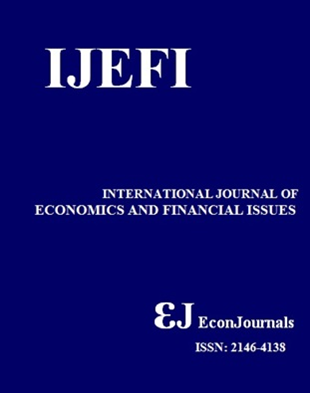High Inflation in Nigeria: A Demand-Pull or Cost-Push Phenomenon?
DOI:
https://doi.org/10.32479/ijefi.19418Keywords:
Inflation, Demand-Pull, Cost-Push, Monetary Policy, Nigeria, FMOLSAbstract
This study investigated whether demand-pull or cost-push factors drive inflation in Nigeria. The study applied the Fully Modified Ordinary Least Squares (FMOLS) on annual time-series data from 1990 to 2023. The empirical results showed that lending interest rate had a strong and significant positive effect on inflation, implying that inflation in Nigeria is a cost-push phenomenon. GDP per capita growth rate (GDPPCGR) heavily reduced inflation, implying that economic growth improves productivity and stabilizes prices. Broad money supply had a negative and insignificant effect on inflation, opposing the traditional belief that increased liquidity triggers inflation. Total consumption expenditure and real exchange rate had insignificant impact on inflation, implying that demand-side pressures and exchange rate fluctuations had insignificant impact on inflation in Nigeria during the period of the study. Based on the findings, policymakers should focus on monetary policy using interest rate strategy in managing inflation.Downloads
Downloads
Published
2025-06-18
How to Cite
Ashakah, F. O., Mgbomene, C., Metieh, F. C., & Opara, F. N. (2025). High Inflation in Nigeria: A Demand-Pull or Cost-Push Phenomenon?. International Journal of Economics and Financial Issues, 15(4), 283–291. https://doi.org/10.32479/ijefi.19418
Issue
Section
Articles
Views
- Abstract 126
- FULL TEXT 91




